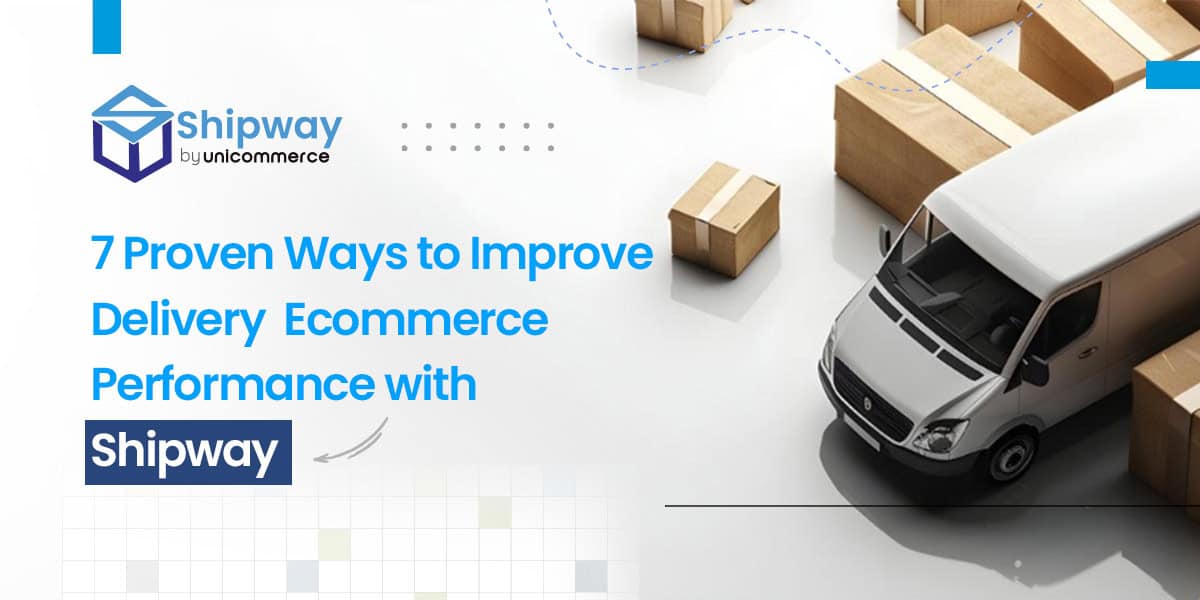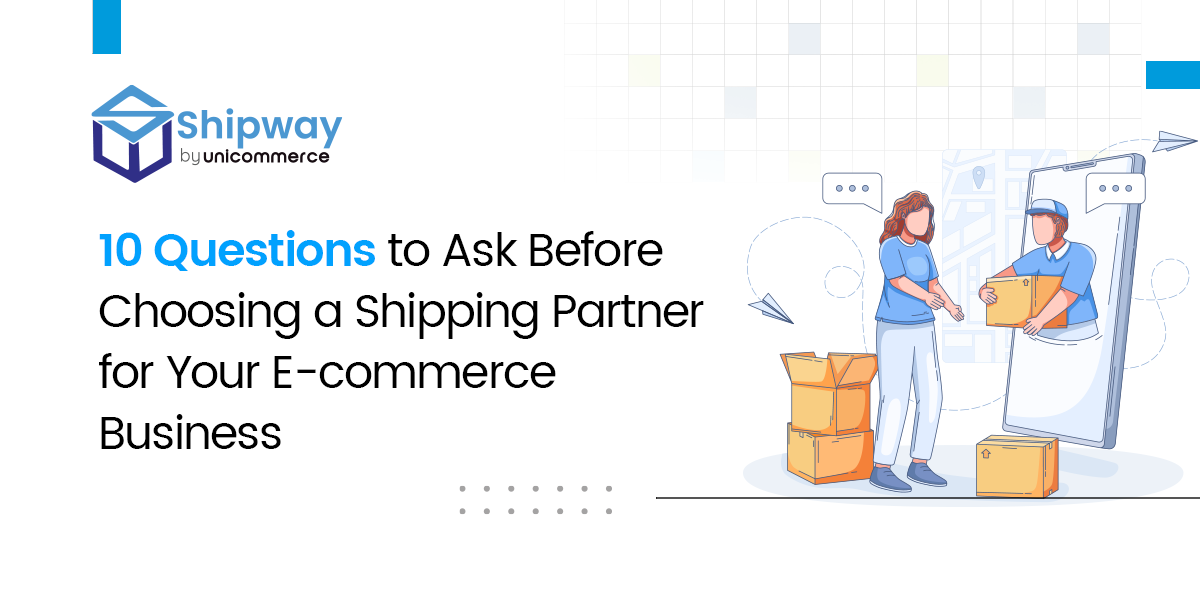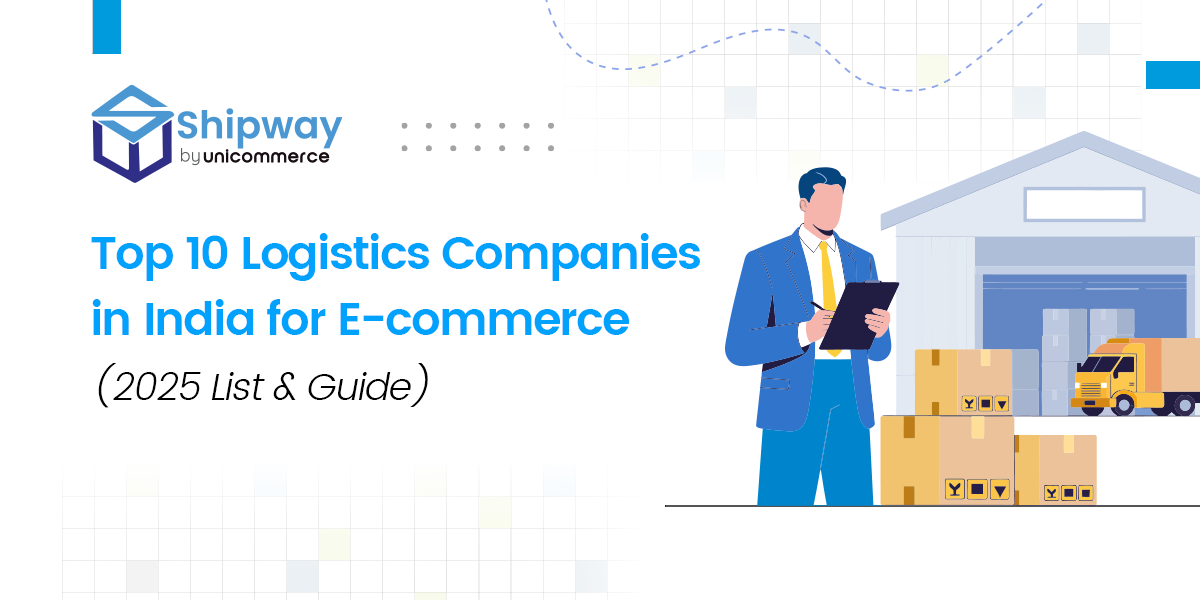In ecommerce, fast and smooth delivery can make or break your business. Customers don’t just want good products, they want them on time, in perfect condition and at the right cost.
That’s why tracking your ecommerce shipping KPIs and logistics metrics is super important. These numbers help you understand how your shipping is doing and where you can do better.
This guide breaks it all down in simple words, with real examples. If you manage a small D2C brand or a big ecommerce team, you’ll find tips, tools, and templates that work for you.
What Are Shipping KPIs in Ecommerce?
In simple terms, a shipping KPI, also known as a shipping key performance indicator, is a measurable number that shows how well your delivery process is working. Think of them like health check-ups or a fitness tracker for your ecommerce delivery system. They show whether orders are going out on time, accurately, and cost-effectively and highlight metrics that go off track.
For example, if you shipped 100 orders this week and 90 reached customers on time, your on-time delivery KPI would be 90%. But why does this matter?
Imagine you run an online store that sells skincare products. A customer places an order, but it arrives later than the estimated delivery date, damaged or containing the wrong item. What happens next? The customer experience gets impacted, and they leave a bad review, an angry social media post and tank your marketplace ratings. It hurts your customer retention and brand trust.
But shipping KPIs acts like a warning sign and helps you spot and fix these issues before they become a bigger problem. They help you actively keep track of your shipping metrics with the help of a dashboard and reports and highlight events where breaches occur.
Reddit Insight: One founder shared on r/ecommerce that tracking “first-attempt delivery success” as a KPI helped them reduce RTO (Return to Origin) by 20% – just by identifying pin codes where delivery was consistently failing.
Shipping Metrics vs. Shipping KPIs
But if both metrics and KPI help you track the number, then what is the difference between a shipping metric and a shipping KPI?
Let’s clear the confusion:
- Metrics are just numbers, like the delivery time or TAT of an order could be 3 days, or the cost of shipment is ₹55. This is a metric for your business.
- But KPIs, on the other hand, are goals or benchmarks. For example, 95% of orders received are delivered within 3 days, the first-attempt delivery rate should be above 80% or the RTO rate should be under 10%
So, all KPIs are metrics, but not all metrics are KPIs. KPIs help you focus on what matters and track progress toward key operational outcomes. Both are useful, but KPIs help set targets and improve results.
Pro Tip: Use a shipping KPI dashboard or shipping KPI Excel template to set weekly goals and monitor deviations. This makes it easy to take quick corrective actions.
10 Shipping KPIs & Metrics for Ecommerce Sellers: Simple Guide with Examples
Shipping is not just about getting products from point A to point B. It’s a critical part of the customer experience and a major cost center. Tracking the right Shipping KPIs helps ecommerce businesses identify delays, reduce returns, optimize courier choices, and lower costs.
Here are the top shipping KPI for ecommerce businesses, explained simply.
1. On-Time Shipment Rate
What it shows: How many of your deliveries reach the customer within the promised time.
Formula: On-time Deliveries ÷ Total Orders × 100
Example: You promised a 3-day delivery TAT to your customers. Out of 1,000 orders last month, only 850 were delivered in 3 days, then your on-time shipment rate = (850 ÷ 1,000) × 100 = 85%
Why it matters: If this rate is low, customers may get frustrated. You might need to improve courier partnerships or warehouse dispatch times.
2. Shipping Accuracy
What it shows: Whether the right items are being sent to the right customers.
Formula: (Correct Orders ÷ Total Orders) × 100
Example: Out of 500 shipped orders, 15 had missing or wrong items. Shipping Accuracy = (485 ÷ 500) × 100 = 97%
Why it matters: Wrong shipments lead to returns and refunds, which increase costs and harm brand trust.
3. Average Shipping Cost per Order
What it shows: How much you spend, on average, to ship one order.
Formula: Total Shipping Spend ÷ Total Orders
Example: You spent ₹50,000 on shipping 2,000 orders. Average Shipping Cost = ₹50,000 ÷ 2,000 = ₹25 per order
Why it matters: Helps you evaluate if your shipping partners are cost-effective, or if you can reduce packaging or delivery zones.
Tip: Use this to find cheaper courier options without hurting delivery quality.
4. Delivery Time or TAT
What it shows: How long it takes to get an order from your warehouse to the customer’s door.
How to track it: Measure time from order placement to successful delivery, and segment by city, product, or courier partner.
Example:
- Metro cities: 2 days
- Tier 2 cities: 4 days
- Remote areas: 6 days
Why it matters: You can offer more accurate delivery timelines to customers or look for faster delivery partners where needed.
5. Return Rate Due to Shipping
What it shows: How many returns happen because of delivery problems (late delivery, wrong item, damaged package).
Formula: (Shipping-Related Returns ÷ Total Orders) × 100
Example: Out of 1,000 orders, 40 were returned — 30 of them due to shipping issues. Return Rate Due to Shipping = (30 ÷ 1,000) × 100 = 3%
Why it matters: A high return rate signals poor last-mile delivery or packaging. Fixing it saves money and boosts customer trust.
6. Shipment Damages
What it shows: Percentage of packages that arrived damaged.
Formula: (Damaged Shipments ÷ Total Shipments) × 100
Example: Out of 800 shipments, 12 were damaged in transit. Shipment Damage Rate = (12 ÷ 800) × 100 = 1.5%
Why it matters: Damaged products lead to refunds and hurt your brand image. Maybe you need stronger packaging or better courier handling.
7. Carrier Performance
What it shows: Which courier (like Delhivery, Shiprocket, Blue Dart) is best?
How to track it: Measure each courier’s delivery speed, damage rate, RTO rate, and customer complaints.
Why it matters: Helps you double down on high-performing carriers and avoid those causing delays or issues. Better carrier selection = better customer experience.
8. Cost by Shipping Method
What it shows: Is express delivery worth the extra money?
How to track it: Compare average cost per order for different methods (standard, express, same-day) vs their on-time rates and customer satisfaction.
Why it matters: Sometimes, paying more for faster delivery may improve conversions or retention. But if standard shipping performs well, you can save costs.
9. Fulfillment Time
What it shows: How quickly can your warehouse team pack and ship after an order?
How to track it: Measure the time from when the order is placed to when it is handed over to the courier.
Why it matters: Slower fulfillment = slower delivery = unhappy customers. Speeding this up can drastically improve overall delivery time.
10. RTO Rate (Return to Origin)
What it shows: How many orders come back without being delivered?
Formula: (RTO Orders ÷ Total Orders) × 100
Example: If you shipped 2,000 orders and 120 were RTO, RTO Rate = (120 ÷ 2,000) × 100 = 6%
Why it matters: High RTO usually means bad addresses, no COD confirmation, or delivery delays. Fixing these issues improves profitability and reduces waste.
Bonus Insights: Hidden Metrics Every Brand Should Track
1. Delivery Mode Performance (Air vs Surface)
If you want faster deliveries during peak months, increase air shipping. But keep an eye on costs.
2. NDR (Non-Delivery Report) Rate
High NDR means failed delivery attempts. This can spike your RTO and frustrate customers. Tactics to reduce it:
- Use address validation at checkout
- Send pre-delivery SMS or WhatsApp alerts
- Confirm COD orders in advance
3. Zone-Wise Delivery Time (P2A – Picked to Attempt)
Know your delivery speed by region. Metro to Metro (Air) deliveries are fastest at 1.8 days average. North East (Surface) is slowest in 5.4 days, while tier 2 deliveries via surface takes about 4 days. Avoid surface shipping for far zones like the Northeast if customer experience and delivery time is a priority.
Why Shipping Metrics Matter for Online Sellers?
Think of this: Two brands sell the same product. But one delivers it late and often sends the wrong item. The other delivers on time, every time. Which one would you choose?
Your shipping experience is part of your product. Here’s why shipping performance metrics matter:
1. Build Customer Trust
Consistently hitting a 95%+ on-time delivery rate shows reliability. Shoppers who receive their orders on time are far more likely to reorder and recommend your brand.
2. Reduce RTO (Return to Origin)
Failed deliveries especially on COD orders hurt your margins. A high RTO rate means wasted cost and time. Tracking your RTO rate helps you spot the root causes like incorrect addresses or delays and fix them before they snowball.
3. Cut Shipping Costs
By comparing courier partners, you can reduce your shipping cost per order without affecting delivery speed. You might find cheaper alternatives without sacrificing speed or reliability.
4. Improve Team Efficiency
You can measure how quickly your warehouse team picks, packs, and ships. That’s your fulfillment time, a key part of shipping success. Faster fulfillment means faster delivery, lower RTOs and happier customers.
Ready to Improve Your Shipping?
Shipping isn’t just about moving boxes. It’s about giving your customers a great experience. Use this guide to track the right shipping metrics for ecommerce, fix the bottlenecks, and boost your bottom line.
Ready to turn insights into impact? With Shipway’s shipping aggregator, you can do more than just track orders. Automate shipping workflows, reduce RTOs, and offer real-time branded tracking to customers. From NDR management and multi-courier allocation to post-purchase communication and returns automation. Shipway helps you simplify your ecommerce operations and scale faster.
Start your journey toward faster, smarter, and efficient shipping today.
You may also like…
7 Proven Ways to Improve Delivery Ecommerce Performance with Shipway
Delivering products swiftly and reliably has become a decisive factor for winning and retaining customers in ecommerce delivery. Fast delivery...
read more10 Questions to Ask Before Choosing a Shipping Partner for Your E-commerce Business
Top 10 Questions to Ask Before Choosing a Shipping Company Setting up an e-commerce business is just one step on the ladder to success, but...
read moreTop 10 Logistics Companies in India for eCommerce (2025 List & Guide)
Introduction: Why Logistics Matters for India’s Growing eCommerce Sector The Indian eCommerce sector has witnessed tremendous growth, projected to...
read more






